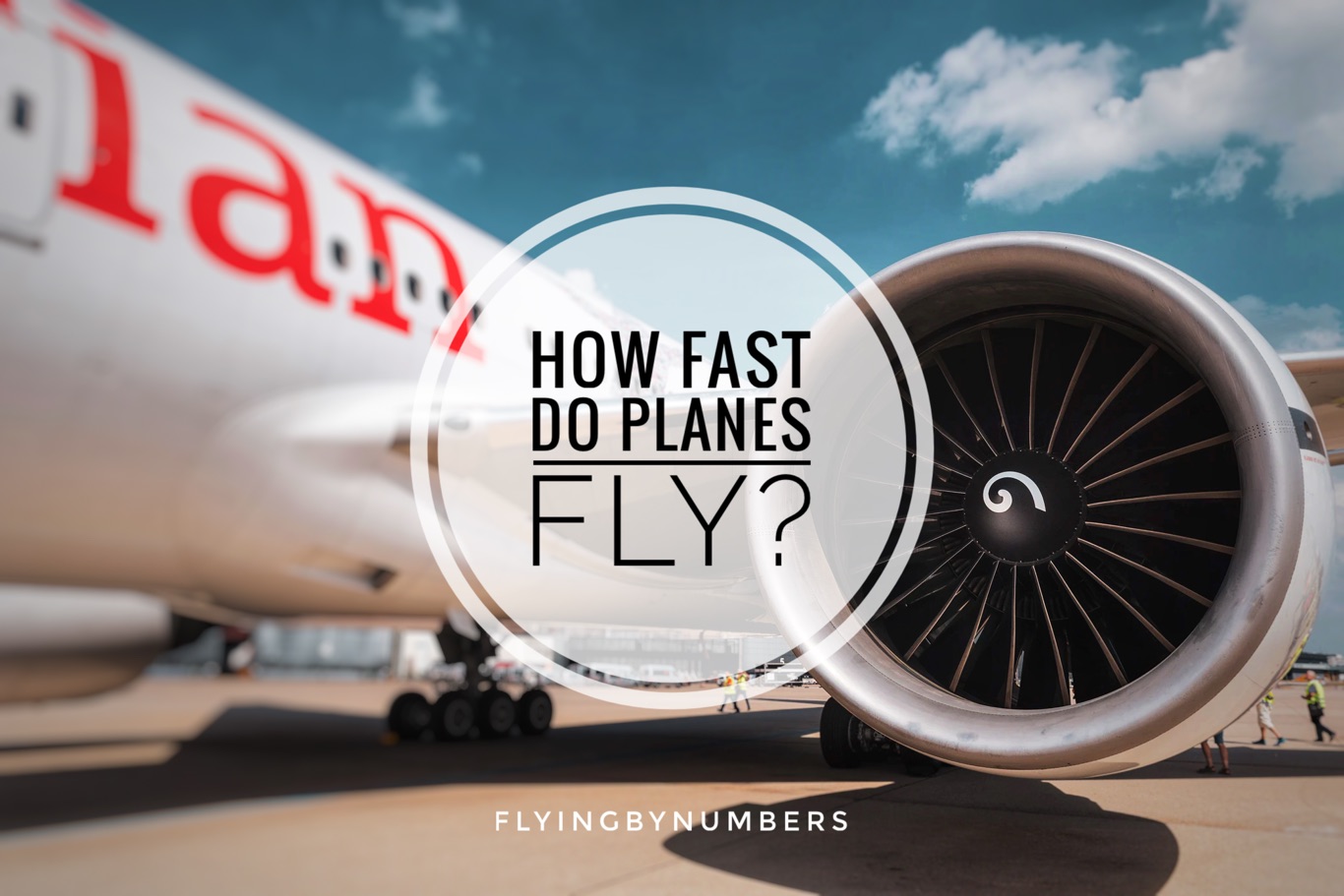Do you have a need for speed? When it comes to commercial planes, which one will get you there the fastest? Or, are you just curious as to what speed you’ll reach whilst travelling on your next holiday?
In this article, we will cover everything you need to know about how fast your plane is going. First we will look at how pilots measure speed, before exploring the typical cruising speed of a passenger aircraft, and finally, we will solve the debate, who makes faster planes? Boeing or Airbus.
So sit back, relax, and get ready for takeoff because we are about to take off into the world of plane speeds!
How do pilots measure speed?
Why can’t we get an exact answer for the typical aircraft cruising speeds? The simple answer, is that measuring aircraft speed isn’t always easy. When pilots sit down in a modern commercial aircraft, they are presented with numerous screens, all showing different methods of measuring speed. So, what do they see, and more importantly, why?
There are three main ways pilots measure speed, in nautical miles per hour (kts) as a Mach number and arguably most importantly as a ground speed.
Here’s a brief overview:

Knots
Nautical miles per hour — or knots — is the most common way pilots measure speed. Aircraft airspeed is measured by comparing the air pressure generated by the forward movement, versus the static outside air pressure.
Calculating airspeed in this way can require many corrections, differing speeds temperatures and instruments will all add errors. But fortunately for commercial pilots, these are all removed by the inflight computers! Commercial airline pilots see all of their speeds as TAS — True Air Speed.
We can convert kts into more familiar speeds easily:
- 1 nautical mile is approximately 1.85 kilometres per hour.
- 1 nautical mile is approximately 1.15 miles per hour.
Mach Number
Mach number is how fast an aircraft is travelling compared to the speed of sound. It is expressed as a ratio of an object’s speed (the aircraft) to the speed of sound in the surrounding medium (In this case – air!).
Why do pilot’s use Mach number for cruising speeds and not knots? Well, as aircraft fly higher and faster, the air density and the outside air temperature decrease. That means it takes a slower TAS to get to any given Mach number the higher the plane climbs. NASA has a calculator, where you can see this relationship change. Essentially, 300kts might be Mach 0.70 at one altitude, but the same 300kts might be Mach 0.90 at another!
Both pilots and the aircraft designers need a consistent reference point for aircraft speed. So at high levels (typically above 25,000 ft (ca. 8 km)) aircraft speed is measured in Mach, rather than knots.
Ground speed
Ground speed is what most people think of when they ask ‘how fast is this plane going?’ It’s the combination of an aircraft’s actual speed through the air — either measured in kts or Mach number, considering the wind speed.
You can calculate it using this formula: Ground speed = knots + windspeed.
Up at cruising altitude, high-level winds can be particularly strong. It’s not uncommon for 100 mph (ca. 161 km/h)+ winds. Aircraft route planners and airline pilots, seek these winds — known as jet steams — to help push the aircraft towards their destination. It’s one of the ways pilots make up time en route, and it helps save fuel.
How fast do passenger planes typically fly?
Now that we know how pilots measure speed, let’s take a look at the typical cruising speeds of commercial aircraft.
- Shorthaul commercial aircraft typically cruise around mach 0.79.
- Longhaul passenger aircraft cruise slightly faster, at around mach 0.85.
With a typical cruising altitude of a passenger aircraft around 38,000ft (ca. 12 km), a mach number of 0.79 relates to approximately 520 mph (836.86 km/h) for shorthaul aircraft.
Longhaul aircraft at a similar cruising height of 38,000ft are cruising at approximately 560 mph (ca. 901 km/h).
If all commercial planes cruise at roughly the same speed, why do we have new speed records?
With the world’s only commercial supersonic aircraft, Concorde, retiring in October 2003, modern aircraft all prioritise fuel efficiency over speed. As a result, virtually all new aircraft cruise at between 80-85% of the speed of sound.
So, with all commercial aircraft cruising at approximately the same Mach number, why do we have new speed records? For example, the fastest subsonic transatlantic crossing between JFK-LHR was recently set again by British Airways in 2020, taking only 4 hours and 56 minutes!

- This is to do with the third way we measure aircraft speed, the speed over the ground.
- The wind speed on the day was a huge contributing factor to the record being set.
- The normally fast jet stream, was increased in speed by a powerful storm, known as Ciara, that was hitting the UK at the time.
- This increase meant that the jet stream between the US and the UK reached speeds of 260 mph (ca. 418 km/h).
- Pilots took advantage of this jet stream, flying their 747 in the centre of the stream of fast-moving air.
- As a result, the flight achieved a ground speed of 825mph (1327 km/h) significantly faster than the nominal “top-speed” of the plane
Which is faster, Boeing or Airbus?


There isn’t a huge amount in it – the latest models from both manufacturers (the B787 and the A350) have similar cruising speeds of 0.85 – but typically Boeing wins on the speed front.
Airbus’s twin-engined A330, and four-engined A340 both cruise at mach 0.82, whilst the comparable Boeing 777 models cruise slightly faster at 0.84.
In fact, the fastest subsonic commercial airliner is the Boeing 747. Designed with a sleeker, swept back wing, despite its age the 747 has the highest efficient cruising mach number of 0.89 — even faster than the manufacturers’ latest jets.
Summary
So, there you have it! Everything you need to know about how fast commercial planes fly.
Key Takeaways:
- Pilots typically measure speed in nautical miles per hour, as a Mach number, or as a ground speed.
- The average cruising speed of a commercial jet is 520-560 mph.
- New flight speed records are typically set due to weather phenomena affecting the aircraft ground speed — not because commercial aircraft are getting faster!
- Boeing typically wins on the speed front, but Airbus has caught up recently.





